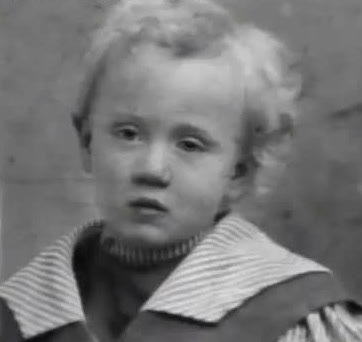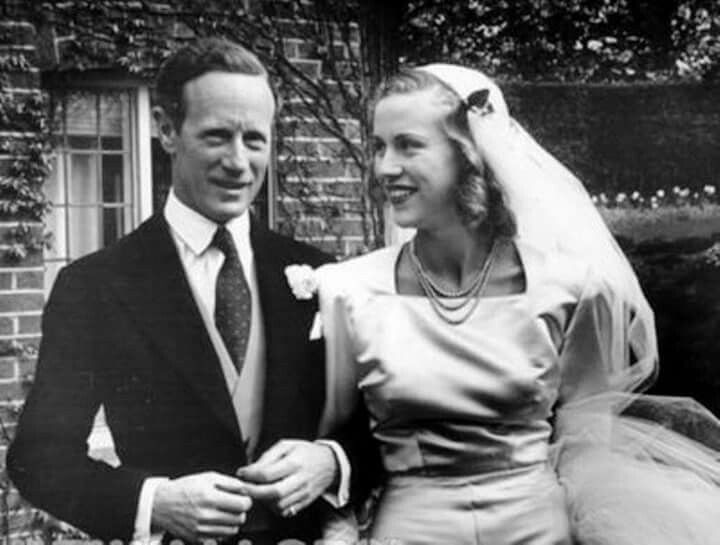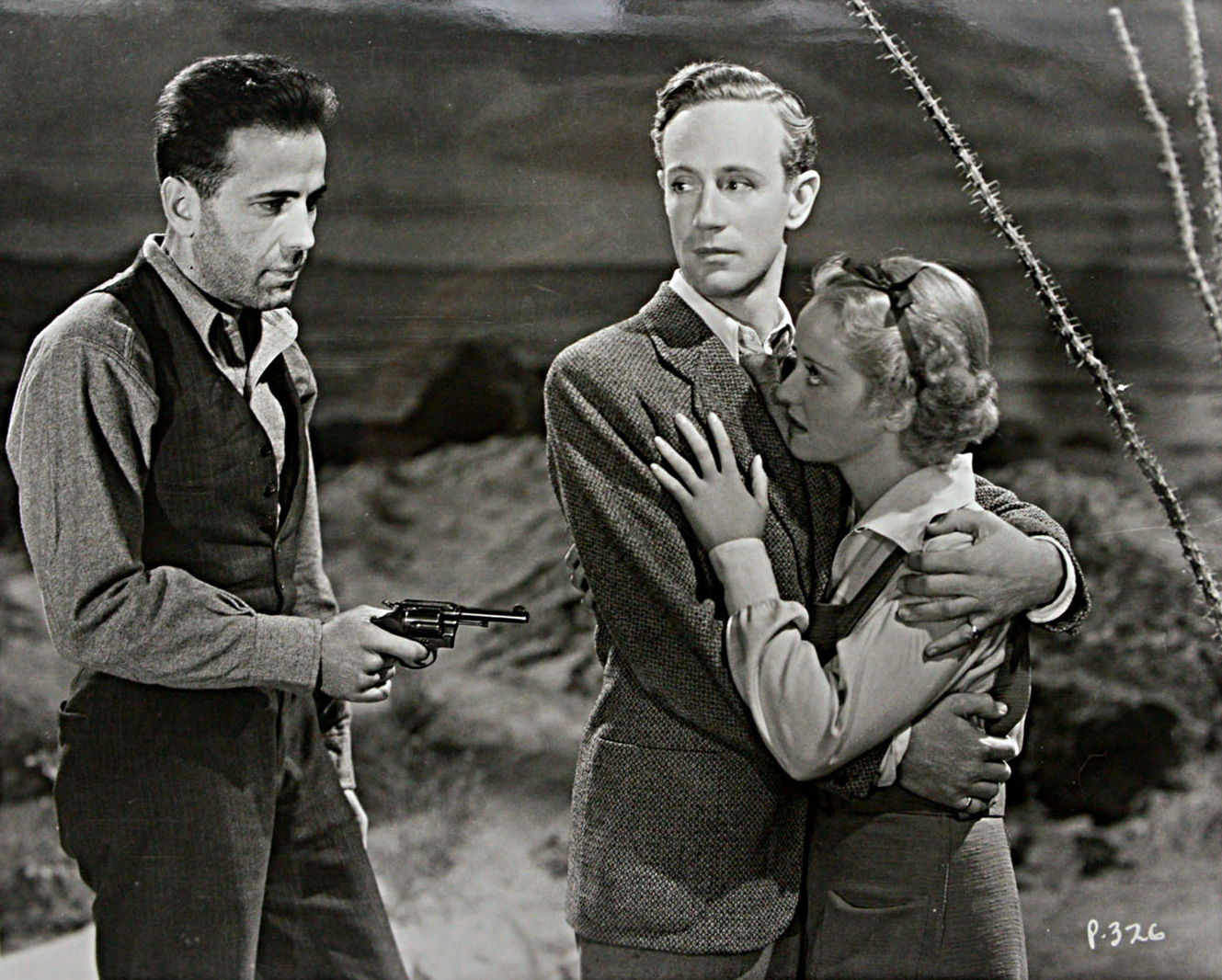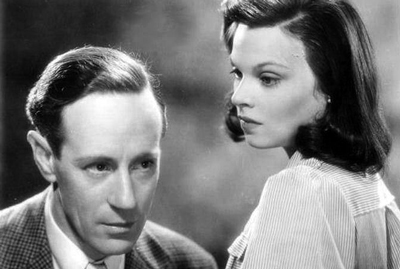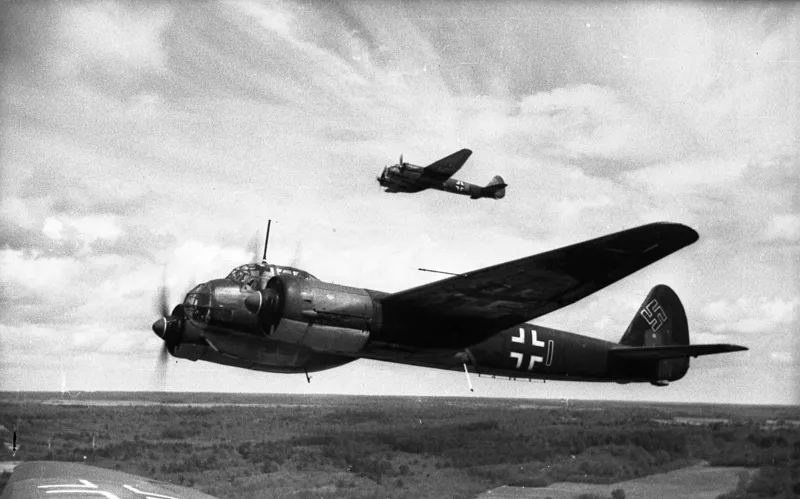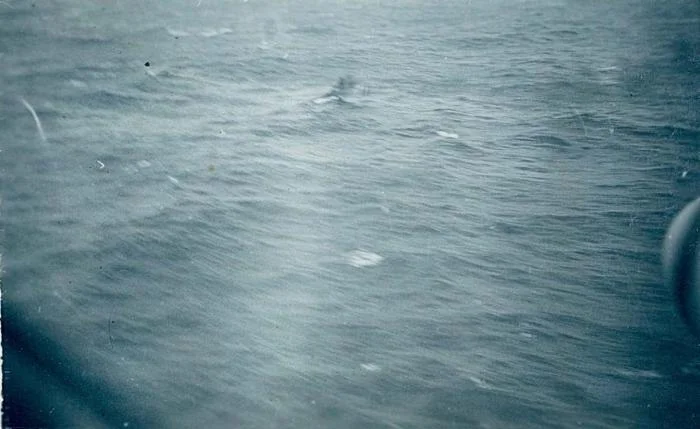6/1/1943 - Believing they are attacking a military aircraft (later there will be rumors that the German military intelligence service, the Abwehr, has identified British Prime Minister Winston Leonard Spencer Churchill as being on board), a flight of eight Luftwaffe Junkers Ju 88C-6 fighter-bombers out of Bordeaux, France, on submarine patrol over the Bay of Biscay, pounce on a civilian Douglas DC-3 making one it's weekly runs from neutral Lisbon, Portugal to Whitechurch Airport outside of Bristol, England. Sending the aircraft into the Atlantic Ocean, all seventeen people aboard British Overseas Airways Corporation (BOAC) Flight 777A, thirteen passengers and four crew members, are killed in the downing (the youngest is passenger Carolina Hutcheon, only eighteen months old), the most famous being English actor, director, producer, and writer, the man screen legend Humphrey Bogart will name his only daughter after, "Gone With The Wind's" Ashley Wilkes, Leslie Howard Steiner.

Leslie Howard
Renowned future actor, Leslie Howard, is born on April 3, 1893 in the Forest Hill section of London, England to 30-year-old Hungarian-Jewish immigrant father, Ferdinand Steiner (an office working who supplements his meager salary by playing piano accompaniment for young lady clients in London ... a fortuitous calling that introduces him to his wife), and his mother, 23-year-old British mother, Lilian Blumberg (dropping their Germanic roots and Jewish religious practices, her family is just two generations removed from its antecedents in the East Prussia Duchy of Courland). The union not accepted at first by Lilian's parents, the couple, with 5-year-old Leslie in tow (the marriage will also produce sister Irene in 1903 and brother Arthur in 1910 ... like their older brother, both will work in the entertainment industry with Irene becoming the casting director on a prestigious array of films over four decades that include 1944's "Henry V," 1959's "Ben Hur," 1965's "Doctor Zhivalgo," and 1972's "The Great Waltz," while Arthur will become a character actor in a number of film and television roles that include appearances in two Alfred Hitchcock, two Pink Panther, and a James Bond movie) will live in Vienna, Austria where Leslie learns how to speak German. The family eventually accepted by the Blumbergs, moves back to Great Britain in 1903, buying the house next-door to that of Leslie's mother's parents. Shy and somewhat withdrawn after enduring living in a new country and having to learn its language and customs, battling for the affections of his family and dealing with the family changing its name from the Germanic Steiner to the more acceptable sounding Stainer and Ferdinand becoming Frank), Leslie is first educated in England at a Upper Norwood prep school where he shows a flair word play and develops dreams of one day becoming a writer ... dreams his father tries to dissuade and his mother encourages (she is a frustrated would-be actress).
Leslie At Two
Lilian With Her Children - 1903
Converting a small box room in the attic of his parent's home into a study he calls "Allandale," he spends hours in his sanctuary dreaming and writing, writing with substance that sees one of his Christmas plays (written in Latin) performed at his school when Leslie is only 13, and other works published in The Penny Weekly and other London magazines. Soon, Leslie, with the encouragement and participation of his mother, along with a handful of friends that name themselves "The Upper Norwood Dramatic Club," begin staging the youngster's works in the Stainer's living room and giving musical concerts in the backyard (Leslie's specialty is ragtime piano), eventually moving to . Already producing, writing, and directing his words, with the example of his mother, and two acting uncles, he also becomes a stage actor. The audiences and productions quickly too big to be confined to a living room, the group moves to South Norwood's Stanley Hall in 1912, putting on their first show there, a production of Leslie's "The True Artist" and T. W. Robertson's "Ours" on December 26th. Successful and satisfying work for Leslie, his "calling" also creates major arguments within the family over the future of the Stainer's oldest son, with Frank wanting him to find a viable profession and his mother backing his artistic pursuits 100%. Father the apparent winner of the tug-of-war over the direction Leslie's life will take as the youth drops out of school (Dulwich College) and takes first a position as a junior clerk in a purser's office of a Thames River steamboat company and then a position arranged by Frank with the Whitehall branch of a Cox and Company bank, where he struggles with absolute boredom keeping track of columns of numbers. The youth's slip into respectable anonymity takes a major turn elsewhere however when World War I begins between Great Britain and Germany on August 5, 1914.
Stanley Hall
Caught up in the patriotism and excitement of war being declared, and sensing an escape from the boredom of his existence is possible, 21-year-old Leslie and a friend, enlist in the Northamptonshire Imperial Yeomanry (a mounted territorial regiment), though neither knows how to ride. Five months of training later, Leslie receives a commission as a second lieutenant. Unsure what to do with cavalry in a war that will feature machine guns, tanks, and long range cannons, the regiment spends ten more months training in the English countryside near the small town of Colchester, where Leslie meets 21-year-old Ruth Evelyn Martin while she is dining on sponge cake and milk at a local tea room. Love at first sight for both individuals, the couple will marry three weeks later in March of 1916 at the town's St. Mary at the Walls Church in a union that lasts, despite many affair disruptions, until Leslie's death in 1943 (the couple will have two children, Ronald "Winkie" Howard in 1918 and Leslie Ruth "Doodie" Howard in 1924 ... though never as famous as their father, both siblings will also catch the acting bug, with Ronald capturing the television roll of Sherlock Holmes in a 39-episode series of the same name filmed in France).
Marriage
Family
Finally sent to France in 1916, Leslie's regiment is just in time to experience all the many horrors of the Battle of the Somme, a terrible clash of 140 bloody days in Northern France in which 95,675 British soldiers will perish or go missing to gain six miles of German occupied territory (an additional 324, 325 English soldiers become wounded casualties). With a detachment of men, crossing a length of open country between a reserve battalion and the British front lines, Leslie is caught in a long pounding of German cannon fire that leads to a disabling bout of "shell shock" neurasthenia. Released from the military and sent back to England for rest and recovery, Leslie will deal with "night terrors" for the rest of his life. Rest and rehabilitation the goal as Leslie and his bride live with first his parents (Ruth has a poor paying job with the War Office), and then in a tiny flat with no telephone, instead of the peace he seeks, the former soldier unfortunately finds himself in another tug-of-war with his parents over what he should do next, with his father once more pushing for a banking job that has been kept open for Leslie to return to, and his mother, who thinks he should follow his heart and write, with acting first paying the bills. In the second and final tug-of-war between the threesome, the young veteran's mother wins out and Leslie comes under the guidance of London theatrical agent Ackerman May, who arranges an audition with a traveling company performing the play, "Peg o' My Heart." A handsome man of blue eyes and golden hair standing six feet tall, Leslie gets the part (waiting for his audition, Leslie sees the play every night until he has memorized every word of the production) of Jerry, and his wife is hired as an understudy to the women in the play, positions guaranteeing weekly play for the production's duration.
The Battle Of The Somme Begins
After The War
Drawing excellent reviews for his work in "Peg," Leslie next wins a part in the play "Charley's Aunt," an entertainment that has been playing in Great Britain for over two decades. Though he is bored by the production and his role in the comedy, Leslie once again receives praise for his performance as one of the play's lead characters, Jack Chesney. In 1917, he appears in the part of Rollo in the silent film, "The Happy Warrior," and for the rest of his career he will juggle roles in theatrical productions on the stage and appearing in film roles. Deciding he needs to make it as an actor in London and not out on the road, endless touring, he rents a small house for he and his pregnant wife, and begins going after acting jobs in Great Britain's capital city. 1918 finds the young actor appearing as Ronald Herrick in the play, "The Freaks," and though the play only lasts for fifty-one performances, Leslie again receives good notices and is off and running in his pursuit of stardom. He will appear in six more London productions in 1918, two in 1919, and five in 1920 (along with assuaging parts in four silent films in the same year), with excellent reviews of his work continuing (it is also the year in which he announces he will henceforth be known as Leslie Howard). Success achieved, he will find the stardom he seeks when he crosses the Atlantic and begins performing on Broadway in New York City.
Howard starts with playing the Honorable Sir Calverton Shipley in "Just Suppose" at Henry Miller's Theatre and between November of 1920 and February of 1926, the actor will appear on the boards of twelve different New York theaters in fifteen productions. After a brief return to London in 1926 for the play, "The Way You Look At It," Howard will return for four more plays in the United States, go back to Great Britain for four more plays in 1928 and 1929, and will close out the decade back in New York City in recreating two of his London successes in Broadway productions of "Candle Light" and "Berkeley Square." And despite all the acting jobs now coming his way, he also continues to write, direct, and produce when those opportunities present themselves (Howard will be inducted into the American Theatre Hall of Fame in 1981).
Artwork For The Freaks
In the 1930s, Howard will also become a movie star in productions such as Outward Bound (1930), A Free Soul (1931 - receiving second billing underneath Norma Shearer, but above Lionel Barrymore and Clark Gable), Berkeley Square (1933 - for which Howard receives a Best Actor Academy Award nomination), the title role in The Scarlet Pimpernel (1934), Of Human Bondage (1934 - opposite Bette Davis), The Petrified Forest (1936 - opposite Bette Davis again and against Humphrey Bogart in the star making part of desperado Duke Mantee, a role that Howard insists go the Bogart after the act had created the role on Broadway ... the decision will make the men life long friends and in honor of Howard, Bogart will name his only daughter, Leslie Howard Bogart in 1952), Romeo & Juliet (1936 - as Romeo and opposite Shearer again), It's Love I'm After (1937 - opposite Olivia de Havilland), Pygmalion (1938 - as Professor Henry Higgins in the non-musical version of George Bernard Shaw's famous play, a role that garners the actor another Best Actor Oscar nomination), and Intermezzo (1939 - opposite Ingrid Bergman in her screen debut). But it is his other screen role of 1939 for which he is most well known and still remembered playing the role of the tragic southern Georgian gentleman, George Ashley Wilkes, in producer David O. Selznick's telling of Margaret Mitchell's 1936 Pulitzer winning novel, Gone With the Wind (when adjusted for monetary inflation, still the highest grossing film in history). During the thirties he will also appear in the plays, The Animal Kingdom (1932), The Petrified Forest (1934), Romeo & Juliet (1936), and Hamlet (1936).
The Petrified Forest With Bogart and Davis
As Ashley Wilkes In Gone With The Wind
With war clouds on the horizon, not impressed with the way Hollywood movie studios operate, in support of the country of his birth, Howard returns to Great Britain in 1939. Supporting England's war efforts against Nazi Germany, Howard will star opposite Laurence Olivier and Raymond Massey in the 1941 war drama, The 49th Parallel (believing in the importance of the film, Howard, Olivier, and Massey all agree to work on the picture for half their normal fees), recreate his "Pimpernel" role in 1941's "Pimpernel" Smith (this time as a "Pimpernel" rescuing inmates from Nazi Germany concentration camps, plays the real life designer of the Royal Air Force's Submarine Spitfire fighter plane, Reginald Joseph Mitchell in the 1942 biographical film, The First of the Few (starring with his friend, actor David Niven). For "Pimpernel" Smith and The First of the Few, Howard will also co-produce and direct both pictures. Wanting to make an even bigger impact on Britain's war efforts, in May of 1943, Howard makes three trips to neutral Portugal to promote his film projects (his latest is producing the film, The Lamp Still Burns starring Rosamund John, Stewart Granger, and Godfrey Tearle, staying at the Hotel Atlantico in the Portuguese Riviera town of Estoril on the 1st through the 4th, the 8th through the 10th, and the 25th through 31st, using the four-time weekly service of KLM Royal Dutch Airlines to back-and-forth between Bristol, England and Lisbon, Portugal ... a route that Luftwaffe fighters of Fliegerfuhrer Atlantik (based near Bordeaux, France) attack on November 15, 1942 and on April 19, 1943 (the Ibis survives hits to it's port wing, engine nacelle, and fuselage from a Messerschmitt Bf 110 fighter in the first attack, and survives the second attack when it dives away from six Luftwaffe fighters and escapes only feet above sea level into a bank of low hanging clouds).
With Actress Mary Morris In "Pimpernel" Smith
Last Photograph - Howard & Spanish Actor
Jose Nieto
Under the auspices of KLM, BOAC (British Overseas Airways Corporation) Flight 777A uses the brown-green camouflaged Douglas DC-3-194 named "Ibis" for its 6/1, seven hour, 1,000 mile civilian flight from Lisbon (Portela Airport) to Bristol (Whitchurch Airport). The Dutch crew of the plane is composed of 48-year-old Captain Quirinus Tepas OBE (the pilot and first in command of the flight), Captain Dirk de Koning (co-pilot and second in command), wireless operator, Cornelis van Brugge, and flight engineer, Engbertus Rosevink. The thirteen passengers for the morning flight consist of Howard and his business manager, 43-year-old Albert Chenhalls (their war priority status allows the men to take precedence over other passengers and results in the "bumping" off the flight of the 6-year-old son of a British diplomat, Derek Partridge, and his nanny, Dora Rove), 35-year-old British journalist Kenneth Stonehouse and his 22-year-old wife, Evelyn Peggy Margetts Stonehouse, 38-year-old Rotha Violet Lettie Clarke Hutcheon, and her two daughters, Petra (11) and Carolina (18 months), 51-year-old Tyrrell M. Shervington, the director of the Shell-Mex and BP Oil Company of Lisbon, Ivan James Sharp, a senior official with the United Kingdom Commercial Corporation, 43-year-old Anglo-German Jewish activist Wilfrid Berthold Jacob Israel, 67-year-old civil engineer, Francis German Cowlrick, Cecilia Amelia Falla Paton (on her way to a consulate secretarial job in England), and British Consulates Inspector Gordon Thompson MacLean. Four crew members and thirteen passengers, seventeen souls in all (it is a total mystery as to why actor Raymond Burr will claim to have lost his wife, Scottish actress Annette Sutherland in the tragedy ... there is no record of the woman being among the victims of the tragedy ... OR OF HAVING EVER EXISTED), the flight is full and people are turned away, including British Squadron Commander, bomber pilot Wallace "Wally" Lashbrook. One lucky young lady that doesn't make the flight is the 7-year-old daughter of WRNS Chief Officer Gladys Octavia Snow OBE, Anne Chichester-Constable ... booked to return to her mother, at the last minute her guardians in Portugal decide the little girl is too tired to make a long trip on June 1st (another lucky traveler is Roman Catholic English College Vice-President Father A. S. Holmes, who gets off the flight when he is advised that he needs to call the British Embassy right away). Scheduled to takeoff at 7:30 in the morning, there is a five minute delay as Howard gets off to pick up a package he left behind at the customs station, a box containing several pairs of silk stockings for the actor's wife, daughter, and other female friends). DC-3 reboarded, Flight 777 is outbound at 7:35 a.m., and Whitechurch airport receives a departure acknowledgement that the plane is on its way (ground personnel will be in contact with van Brugge until shortly after 10:54 a.m., when the radio operator sends out a message that the flight is being followed by a group of German fighter planes). Shortly afterwards, the air waves go silent.
Tepas
Also in the sky that morning, flying a routine patrol to escort two U-boats out to sea are eight Junkers Ju88C-6 heavy fighters (each plane is equipped with five aerial cannons and three machine guns) from the German Luftwaffe base near Bordeaux, under the command of Oberleutnant Herbert Hintze. In the air by 10:00 a.m., the escort mission they are on is quickly called off due to poor weather and the unit instead makes a general patrol of the skies in the area. Searching from a formation that has six Ju88s flying abreast, about fifty yards apart from each other, with two more fighters above providing cover to the larger group. From his position above the other planes in the patrol, Leutnant Albrecht Bellstedt is the first to spot Flight 777 as a "grey silhouette" flying north at an elevation of roughly 9,000 feet. Radioing his comrades, "Indian at 10 o'clock, AA" (meaning enemy aircraft ahead slightly to the left, attack, attack!). Followed by the rest of the patrol, Bellstedt immediately goes after the camouflage painted plane and scores hits that set the DC-3's port engine and wing on fire. Arriving moments later, Hintze immediately recognizes that the transport bares civilian markings and calls off the attack, but it is too late as Bellstedt has mortally wounded the aircraft. Circling like vultures as the DC-3 goes down, the Germans watch as three passengers jump out of the plane, but perish when their parachutes fail to open, while a fourth jumps to their death with the parachute on fire. No one else emerges from the plane, which crashes into the sea, floats for a few moments, and then goes beneath the waves about 200 miles from the northwest coast of Spain. There are no survivors.
The next day, still hoping to find survivors, a Sunderland seaplane piloted by 26-year-old RAAF (Royal Australian Air Force) Flight Lieutenant Colin Braidwood Walker is sent into the area in which Flight 777 vanished the day before, and it too is beset by eight Ju88 fighters. Bombs and depth charges dropped and the aircraft brought to full power, the Sunderland is able to defend itself, firing at it's tormentors as Walker dances it about the sky. In 45 minutes of attacks, Walker and his crew of ten are able to shoot down three fighters (manning a gun, 20-year-old Sergeant Alfred Eric Fuller will be awarded a Distinguished Flying Medal), severely damage three more, and chase off the final two with fire from Sunderland gun stations in the plane's nose and upper turret, starboard and port gallery guns, and it's tail, but not without the plane and crew being damaged also ... in an estimated forty enemy passes, the plane's port engine is shot up (the prop will come off later in the fight), a P4 compass is shattered, a cockpit fire breaks out, the port outer fire extinguisher is knocked out, the base of the rear turret gun (forcing the gun to be aimed and fired by hand for the rest of the encounter), both the plane's elevator and rudder trimming controls will be severed (the strength of both the pilot and co-pilot will be needed to maneuver the Sunderland), the radio transmitter and receiver will be knocked out, and the intercom system receives a direct hit which will cause the crew to communicate with each other using hand signals ... in all the Sunderland will be hit 400 times by machine gun bullets and receive 12 cannon strikes. Within the crew, 27-year-old First Flight Engineer Officer Edward "Ted" Charles Ernest Miles is killed manning the starboard gallery gun, the navigator, 28-year-old Flight Lieutenant Kenneth McDonald Simpson is wounded in the leg (he will be awarded a Distinguished Flying Cross), broken glass cuts up the face of 23-year-old radio operator, Flight Sergeant Harold Arthur Miller, the pilot suffers burns to his hands, chest, and face (for his actions, Walker will receive a Distinguished Service Order), as does 34-year-old co-pilot, Flight Officer Wilbur James Dowling (Dowling will be awarded a Distinguished Flying Cross), and 34-year-old tail gunner, Flight Sergeant Ray Marston Goode (he will receive a Distinguished Flying Medal) is knocked unconscious for five minutes and suffers a concussion firing the Sunderland's tail gun. Finally alone in the sky when the Germans return to their base, the crew lightens the Sunderland by getting rid of over a ton of supplies and gear, then heads for home, a 300 mile journey back to England that has the seaplane making the return on it's two inner engines and landing in a 7-foot sea off the port city of Penzance before coming to rest on the sandy beach of Praa Sands in Cornwall, shortly after 10:00 in the evening.(coming ashore, the survivors will be greeted by the locas bearing hot chocolate and cakes).
Walker
Sunderland
No bodies or wreckage ever found, after the world briefly laminates the loss of Howard and the others on the flight, new "wrong place at the wrong time" tragedies take the disaster's place in the headlines and the incident is mostly forgotten by the time the next century begins, but to this day there are numerous theories that the destruction of Flight 777 was no accident at all.
Flight Memorial - Galacia, Spain
The #1 conspiracy theory that is put in play almost immediately is that the Germans shoot down Howard's flight because they believe English Prime Minister Winston Churchill is aboard ...Churchill is of course not on the flight and by that time in the war, only moves about with military escorts. He is however in the region, about ready to return to England from a conference with Allies in Algiers (Churchill will later admit regrets that spies trying to throw off the Germans as to the prime minister's actual route of return to England might have led to the flight being targeted, and why not when the English leader returned to England from Bermuda the year before under an alias on a commercial flight, and Flight 777 does bear an overweight cigar smoker, Howard's business manager, Alfred Tregear Chenhalls). There is also a theory that the plane is shot down because Germany thinks Howard is a spy and simply wants to be done with the man (and Goebbels wants him gone to end the war propaganda films the actor is responsible for), whether he is a spy or not. And in continuing the motif of idiot spies with poor eyesight that Lisbon seems to be filled with, it is thought that maybe Howard has been misidentified as flight engineer Reginald J. Mitchell, designer of the Submarine Spitfire fighter, the man Howard played in the movie "The First of the Few," and one that the Third Reich has wanted gone for a long time. Then there are the theories that the target wasn't Howard at all, but other passengers aboard the flight ... in these scenarios, the Germans go after the flight to stop the efforts of either Tyrell M. Shervington, the oil executive that after the war is also exposed as British intelligence officer H100 of the Special Operations Executive's Iberian operations, or to put an end to former German businessman Wilfrid Israel, who helps over 10,000 Jewish children escape the clutches of the Third Reich after the Kristallnacht pogrom of November 1938, and is about to do the same for another 1,500 Jewish refugees trapped in "neutral" Spain.
Not Churchill - Alfred Chenhalls
Mitchell & Israel
All the players now gone, no documentation to the contrary found, the world is left with the simple fact of seventeen deaths taking place when Flight 777 is sent into the sea, and that one of them is the famous actor, Leslie Howard ... rest in peace to all those aboard the Ibis that never made it to their destination on June 1, 1943.
Headlines
A Bit Of Debris Photographed By The Germans
After The Plane Goes Under














































